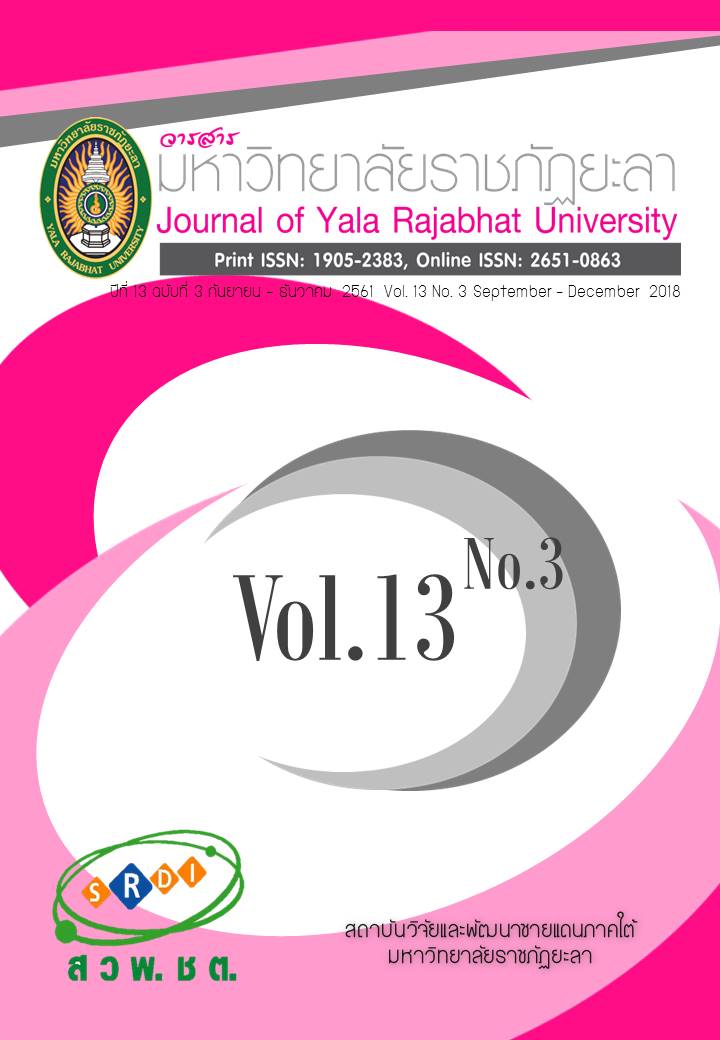The Model Development of Web-Based Collaborative Learning with the Support of Mentoring System for Enhancing Critical Thinking in Higher Education
Main Article Content
Abstract
The objectives of this research study were 1) to develop the model for web-based collaborative learning with the support of mentoring system for enhancing critical thinking in higher education and 2) to tryout the model for web-based collaborative learning with the support of mentoring system for enhancing critical thinking in higher education. The sample group consisted of 67 Information Technology students from Buriram Rajabhat University who registered in the 4131301 course in the 1st semester of 2015. The research tools included a tool used in model tryout process and a tool for collecting data. The results from the study showed that the developed model comprised 4 elements: 1) principles, 2) objectives, 3) five learning processes (relationship building, problem clarification, discussion, conclusion and suggestions, and awarding), and 4) measurement and evaluation. The results from the model’s tryout showed that the effectiveness of the computer lessons according to the model was 1.03, the learning achievement and critical thinking of learners with the model were higher than those with normal learning method at the statistical significant level of .05, critical thinking and the learning achievement of the learners with the model had the positive relation ( r = .688) at the moderate level with the statistical significant level of .01, and learners’ satisfaction towards the model was at a high level.
Article Details
Copyright Notice articles, information, images, etc. was published in this Journal of Yala Rajabhat University is a copyright of the journal Yala Rajabhat University. If any person or deparment wants to bring all or part of it for publish or take any action. Authorization is required in written form from the Journal of Yala Rajabhat University only.
References
2. Ardwichai, P. & Stabhornwong, P. (2011). Comparisons of Learning Achievement and Critical Thinking of Matthayomsuksa 1 Students Using Yonisomanasikara Teaching Activities and Using Teacher’s Handbook Activities. Journal of Educatioin, 22(1), 121-134. (in Thai)
3. Bierema, L. & Merriam, S. B. (2002). E-mentoring: using computer medicated communication to enhance the mentoring process. Innovative Higher Education, 26(3), 211-227.
4. Bloom, B. S. (1976). Human Characteristics and School Learning. New York: McGram-Hill Book.
5. Chernobilsky, E., Nagarajan, A. & Hmelo-Silver, C. E. (2005). Problem-based learning online: multiple perspectives on collaborative knowledge construction [Online]. Retrieved October 12, 2013, from:https://pdfs.semanticscholar.org/cd86/aa2fe6606b9f62a6e8a8ccfdbfd76c507696.pdf.
6. Chizmar, J. F. & Walber, M. S. (1999). Web-Base learning Environment Guided by Principle of Good teaching Practice. Journal of Economic Education, Summer 30(3), 248-259.
7. Cooper, James, L., Pamela, R. & Molly, M. (1994). Cooperative Learning in the Classroom in Changing College Classroom. Diane Halpern and Associates (eds). San Francisco: Jossey-Bass.
8. Khantapthai, T. (2011). A Development of a Blended Learning Model for Learning and Information Technology for Life Course of Undergraduate Students at Rajabhat University. Doctor’s Thesis. Mahasarakham University. (in thai).
9. Office of National Education Commission. (2002). National Education Act of B.E. 2542 and Amendments (Second National Education Act) of B.E. 2545. The Prime Minister’s Office. (in Thai)
10. Panich, V. (2011). Ways for Learning Creation for Students in the 21st Century. Bangkok: Sodsri-Saritwong Foundation. (in thai).
11. Rattanachuwong, S. (2008). Effects of Different Structures of Cooperative Learning on Webboard Discussion Upon Critical Thinking of Eleventh Grade Students with Different Types of Personality. Doctor’Thesis. Chulalongkorn University. (in Thai)
12. Simmatun, P. (2009). A Development of Web-based Collaborative Instructional Model base on Constructivist Theory for Undergraduate Students. Doctor’s Thesis. King Mongkut’s University of Technology North Bangkok. (in Thai)
13. Stewart, S. & Wootton, R. (2005). Design Features of an e-Mentoring System for the Health Professions: Choosing to Learn in Partnership. Telemed Telecare, 1(11), 90-92.
14. Terrion, J. & Leonard, D. (2007). A taxonomy of the characteristics of student peer mentors in higher education : findings from a literature review. Mentoring & Tutoring, 15(2), 149-164.
15. Tongroach, C. (2008). Changing New Educational Paradigms in Professional Teachers: Concepts, Tools, and Development. (2nd ed). Bangkok: Chulalongkorn University Printing House. (in Thai)
16. Worapun, W., Nuangchalerm,P. & Marasri, A. (2016). Self-directed Learning Model in Physics for High School Students. Journal of Yala Rajabhat University, 11(2), 31-35. (in Thai)


